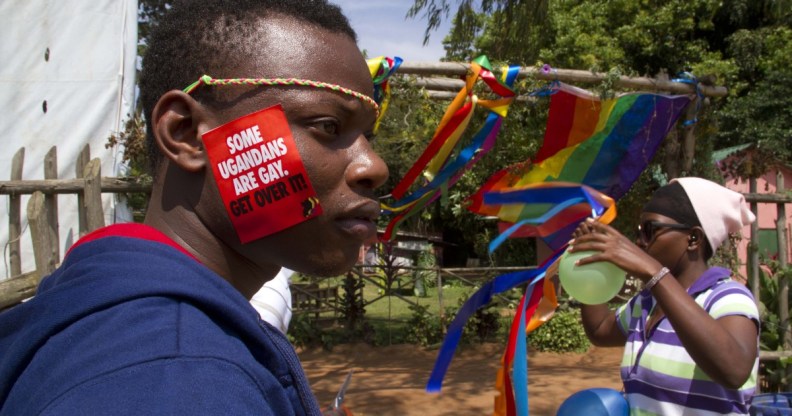Uganda fails to target gay men and sex workers in HIV initiative

Uganda has been criticised for failing to target gay men and sex workers in a new initiative which aims to end HIV by 2030.
The initiative was announced by President Yoweri Museveni last week but it has been criticised for being too “ambitious” and not targeting those most at risk of contracting HIV.

Activists in the country have said that if anything the plan is a “major blow” for HIV prevention because it is excluding these groups.
President Museveni’s announcement came after the World Health Organisation deemed HIV prevention drug Truvada (PrEP) to it’s Essential Medicines List.
The plan to eliminate the virus in Uganda consists of five steps which they hope will eliminate HIV, especially in young women and children.
However, Sylvia Nakasi, a policy and advocacy officer at Uganda Network of Aids Service Organisations (UNASO), explained that if gay men and sex workers are left out they will not succeed in their plan.
Nakasi said: “Uganda will not end Aids if these populations are left out and [continue] to be marginalised, stigmatised and discriminated against in our planning. They have high HIV prevalence and incidence.”
However, the health minister, Sarah Achieng Opendi, said that they are not targeting gay men because they “do not want to promote” homosexuality.
They said: “We don’t want homosexuality and homosexuals in this country. People want to promote what is not in our culture. We can’t accept it.
“Our hospitals are open. We don’t ask people whether they are homosexual or not. Let them go and test. If they are positive, they start treatment. But we can’t give them special attention.”
Uganda has seen a reduction in HIV infections from 135,000 in 2010 to just 60,000 in 2016.
Out of the 1.5 million living with HIV, it is believed that two-thirds are on medication.
However, Uganda hopes that by introducing the plan they will reduce HIV infections and boots medication in accordance with the 90-90-90 target set by UNAids.
This target calls for countries to be ensuring that by 2020, 90% of people living with HIV are diagnosed, 90% are on antiretroviral treatment and 90% of those on treatment have an undetectable viral load.
13 percent of gay men and 18.2 percent of sex workers are at risk of HIV but because of discrimination in the country, it is often difficult for them to seek out treatment.
Nakasi explained that considerably fewer men are tested for HIV and if the country is to achieve the goals of the plan, a lot needs to be changed.
“We will only achieve the target to eliminate HIV by 2030 if we change the way we are doing business.
“We need to set ambitious targets, increase our domestic financing of the response – we need a National Aids Trust Fund up and running – more emphasis on prevention, prevention using proven options like VMMC [voluntary medical male circumcision], use of prophylactic medications (PrEP), targeting high-risk populations, and above all address HIV stigma and discrimination.”
To learn more about HIV and AIDS research, testing and treatment, visit amFAR or the Terrence Higgins Trust.

